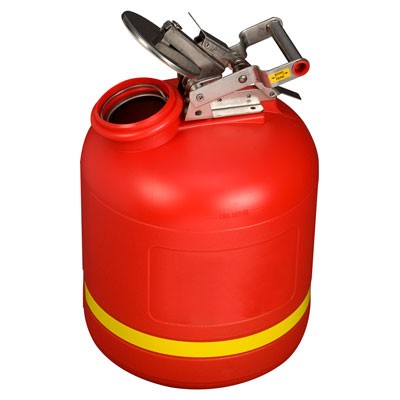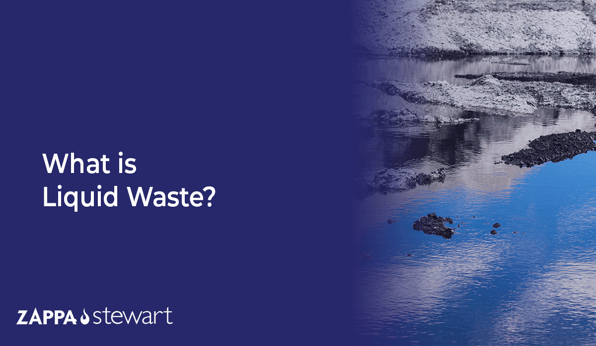Top Liquid Waste Disposal Melbourne: Trusted Providers for Proper Waste Monitoring
Top Liquid Waste Disposal Melbourne: Trusted Providers for Proper Waste Monitoring
Blog Article
Just How Liquid Garbage Disposal Functions: An In-depth Summary of Techniques and Technologies Utilized

Summary of Liquid Waste Kind
The complexity of fluid waste kinds requires a thorough understanding of their qualities and effects for disposal. Liquid waste can broadly be categorized right into a number of types, including commercial, local, farming, and dangerous waste. Each category displays distinct buildings, requiring specific management techniques to reduce ecological and wellness risks.
Industrial liquid waste originates from producing procedures and frequently includes a series of contaminants, such as heavy steels, solvents, and natural compounds. Community liquid waste, mainly consisting of wastewater from families and business facilities, contains natural matter, nutrients, and virus (industrial wastewater treatment). Agricultural fluid waste, including drainage from ranches, may consist of fertilizers, chemicals, and animal waste, positioning risks to water top quality and ecological communities
Unsafe fluid waste is defined by its poisoning, reactivity, or potential to trigger harm. Comprehending these diverse liquid waste kinds is critical for establishing reliable disposal methods and ensuring conformity with environmental guidelines.
Physical Treatment Techniques

Testing is the first action, where larger bits and debris are removed from the fluid waste utilizing displays or grates. This procedure shields downstream equipment from damages and guarantees smoother operation. Following testing, sedimentation uses gravitational force to separate solids from fluids. In sedimentation storage tanks, much heavier particles settle near the bottom, creating a sludge layer, while the cleared up liquid can be further dealt with.
Filtering is another important approach that includes passing the liquid via porous products, such as sand or membranes, to record smaller particles. This action enhances the top quality of the liquid, making it ideal for subsequent therapy processes.

Chemical Therapy Methods
Chemical therapy methods are essential for effectively taking care of liquid waste, specifically in dealing with liquified and colloidal contaminants that physical techniques may not effectively remove. These methods make use of different chemical representatives to neutralize, precipitate, or change hazardous compounds right into less damaging kinds.
One common technique is coagulation and flocculation, where chemicals such as alum or ferric chloride are included to promote the aggregation of put on hold fragments. This process enhances sedimentation, enabling less complicated removal of the resulting sludge. Furthermore, oxidation processes, utilizing agents like chlorine or ozone, are employed to damage down complex natural substances and microorganisms, rendering the waste much safer for discharge or more therapy.
Neutralization is another important strategy, which adjusts the pH of acidic or alkaline waste streams to neutral levels, stopping possible injury to downstream systems and the environment. Additionally, progressed oxidation procedures (AOPs) make use of mixes of oxidants and ultraviolet light to degrade persistent contaminants, accomplishing a greater degree of therapy performance.
Organic Therapy Procedures
Organic therapy procedures play an essential role in the management of liquid waste by using bacteria to disintegrate raw material and decrease pollutant levels. These processes can be extensively categorized into anaerobic and aerobic therapies, each using details microbial areas to accomplish efficient waste deterioration.
Cardiovascular treatment involves making use of oxygen to promote the malfunction of organic materials by bacteria. This procedure pop over here is generally carried out in triggered sludge systems, where aeration containers supply a favorable setting for microbial growth, resulting in the oxidation of organic toxins. The resultant biomass can be separated from treated effluent via sedimentation.
In comparison, anaerobic treatment takes place in the lack of oxygen, relying on various germs to break down natural matter. This method is specifically helpful for high-strength waste, as it generates biogas, an eco-friendly energy resource, while minimizing sludge production. Technologies such as anaerobic digesters are regularly employed in municipal and commercial applications.
Both aerobic and anaerobic biological therapies not just lessen the ecological impact of liquid waste but additionally help with source recovery, making them essential parts of sustainable Go Here waste administration strategies. Their adaptability, effectiveness, and performance support their extensive execution throughout various industries.
Arising Technologies in Disposal
Innovative methods to fluid garbage disposal are rapidly developing, driven by innovations in technology and an enhancing focus on sustainability. Amongst these arising technologies, membrane bioreactors (MBRs) liquid waste disposal have acquired grip for their capability to incorporate organic treatment with membrane filtering, leading to high-grade effluent that can be recycled in various applications. MBRs enable smaller footprints and much more effective operations compared to conventional systems.
One more appealing advancement is making use of anaerobic digestion integrated with nutrient healing innovations, which not only treats liquid waste but also creates biogas and recoups beneficial nutrients like nitrogen and phosphorus. This dual advantage boosts source effectiveness and minimizes environmental effect.
Additionally, advanced oxidation procedures (AOPs) are being taken on for the deterioration of complicated organic contaminants. These approaches make use of powerful oxidants and stimulants to damage down contaminants at the molecular degree, supplying a very effective service for challenging waste streams.
In addition, the assimilation of expert system and artificial intelligence in waste monitoring systems is enhancing operational efficiency and anticipating maintenance, leading to lowered expenses and enhanced ecological conformity. These technologies mirror a considerable shift in the direction of more effective and lasting liquid garbage disposal practices.
Verdict
In conclusion, efficient fluid waste disposal demands an extensive understanding of different strategies and technologies. By constantly progressing these techniques, it becomes possible to attend to the expanding obstacles associated with fluid waste, ultimately contributing to environmental security and source recuperation.
Fluid waste disposal is a crucial element of ecological monitoring, calling for a comprehensive understanding of various methods and modern technologies customized to various waste kinds. Fluid waste can generally be classified right into numerous types, consisting of commercial, municipal, farming, and hazardous waste. Agricultural fluid waste, consisting of drainage from ranches, might consist of plant foods, pesticides, and animal waste, positioning risks to water quality and communities.
Various physical treatment approaches play a critical duty in taking care of fluid waste successfully - industrial wastewater treatment.In final thought, effective liquid waste disposal demands a thorough understanding of different methods and technologies
Report this page